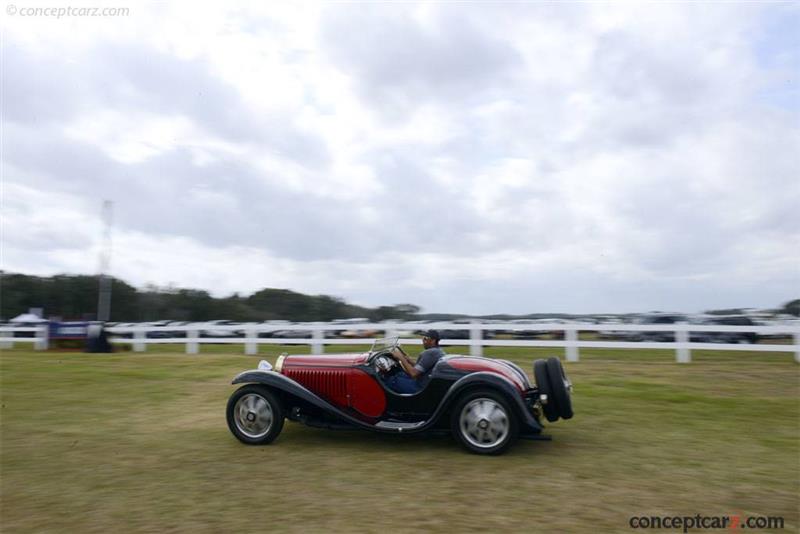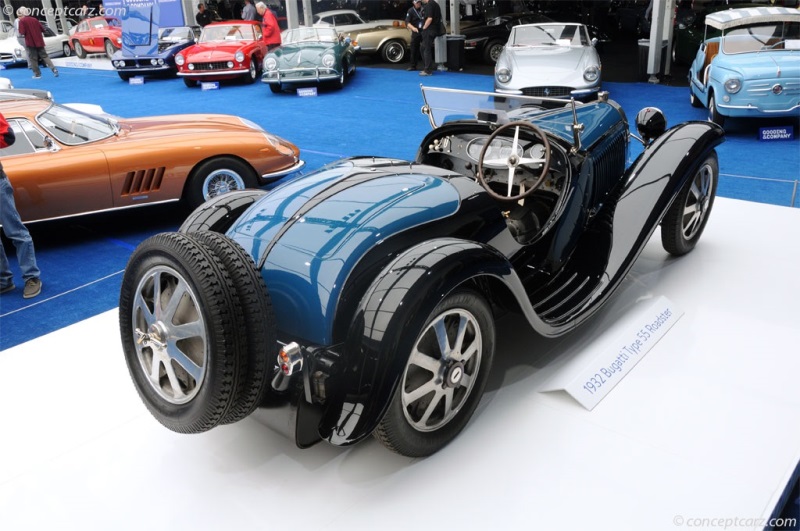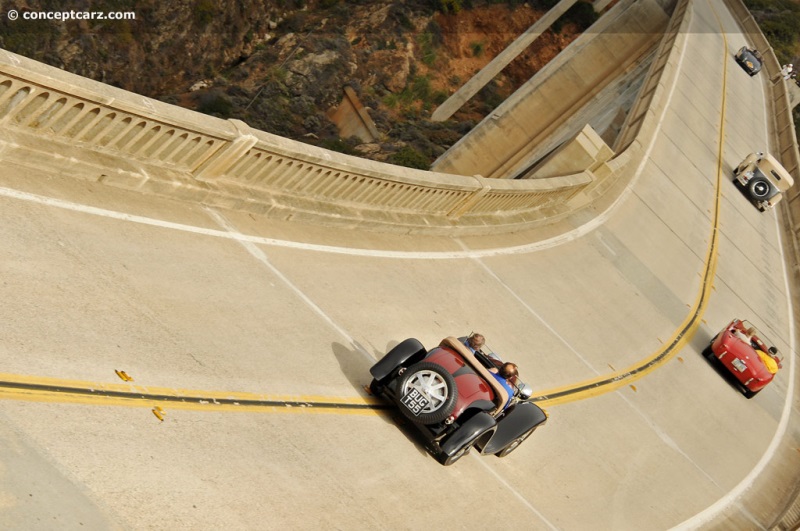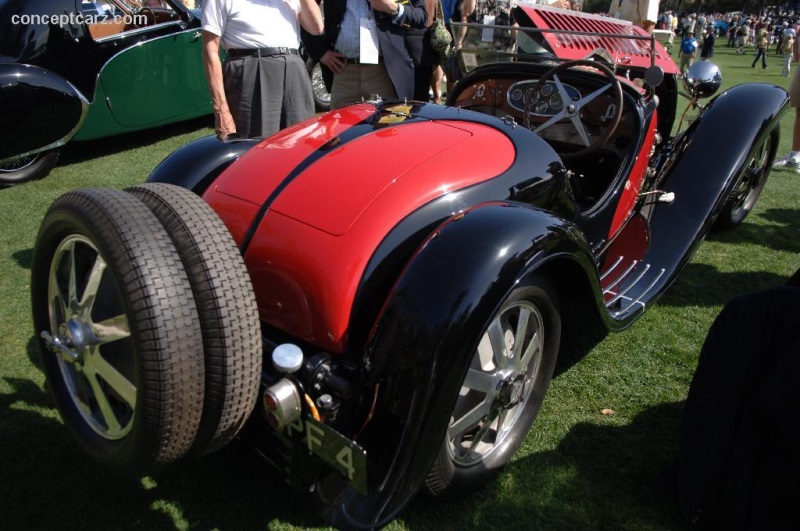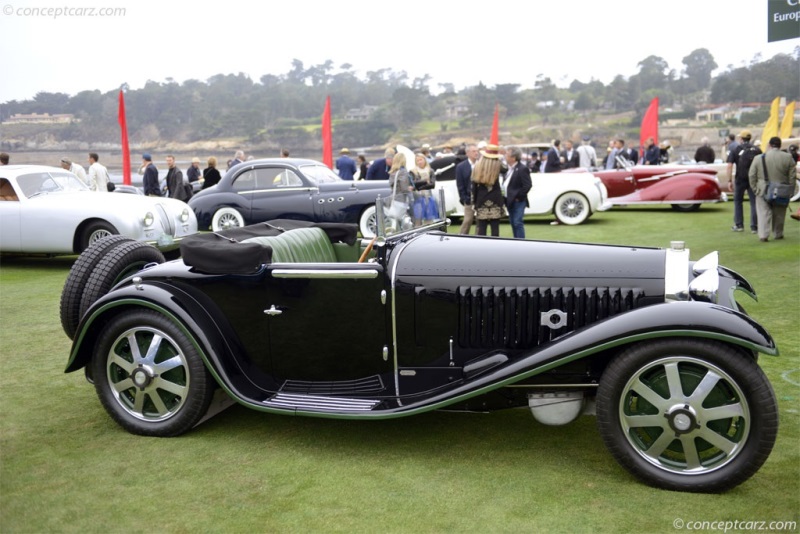Ettore Arco Isidoro Bugatti was born in Milan in 1881 and founded Automobiles E. Bugatti in 1909 in the then-German town of Molsheim in the Alsace region of what is now France. His early automobiles focused on reducing weight instead of increasing engine size, which Ettore correctly believed provided better fuel economy, acceleration, braking, and road-holding characteristics. 
Roadster
Chassis #: 55201
Engine #: 1
View info and history
Auction entries : 2In 1924, at the Grand Prix of Lyon, Bugatti introduced the Type 35 Grand Prix which weighed a mere 1,500 lbs. Under the graceful bonnet was an overhead-camshaft straight-eight engine which helped Bugatti achieve over 2,000 race victories by 1927. The Bugatti Type 51 model followed, using design and engineering cues from Harry Miller's Packard Cable racing specials. The 2.3-liter supercharged twin-cam Grand Prix car continued to expand the company's racing successes well into the 1930s. Jean Bugatti was the eldest son of Ettore and, by the late 1920s, had become an integral part of the company and had demonstrated his vehicle design abilities. His body design skills matched his father's engineering talents, helping the Bugatti Company become one of the greatest names in automobile manufacturing. By 1932, at the age of twenty-three years, he created most of the design for the company's Type 41 Royale. Additionally, he designed four bodies for the Type 57, the Ventoux, Stelvio, Atalante, and Atlantic models. More than just a talented artist, he displayed his engineering skills by working on new independent suspension systems to replace solid front axles and twin-cam engine applications. While Ettore was conservative and preferred tried-and-true technology, Jean was more forward-thinking and sought new technical innovations. Jean proposed the Type 55 'Supersport' that catered to Bugatti's most demanding clientele. The Bugatti Type 55, introduced in 1931 at the Paris Auto Show, employed the same deep-sided frame chassis as the 16-cylinder Type 45 and Type 47 Grand Prix cars, and the 4.9-liter Type 54. It was given the Type 51's supercharged engine and most examples received the four-speed gearbox from the contemporary Type 49. The top speed was in excess of 110 mph. This was the first-and-only time the 2.3-liter supercharged engine was used in a road-going car. The reverse quarter-elliptic rear springing and front axle arrangement hailed from the company's most successful Grand Prix cars. 
Roadster
View info and historyBugatti offered the Type 55 as a rolling chassis or could be fitted with one of three factory bodies that included a coupe, cabriolet, and Roadster. All three of the factory bodies were designed by Jean Bugatti. Thirty-eight examples of the Super Sport Bugattis left the Molsheim works between 1932 and 1935, with 14 wearing the Jean Bugatti Roadster coachwork. Although these production figures appear low, especially when compared to the Type 43, the Type 55 was a much higher-priced car built for Bugatti's elite clientele. They were essentially the supercar of its era using the race-proven mechanicals of Bugatti's most legendary race cars.
by Daniel Vaughan | Apr 2020
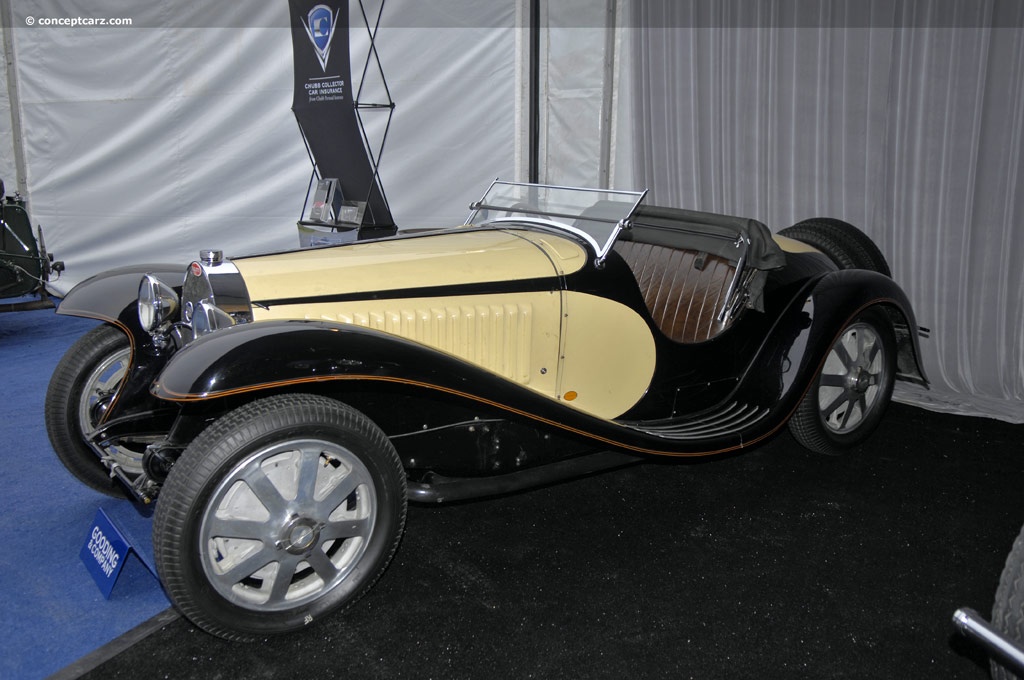
Roadster
Chassis #: 55201
Engine #: 1
View info and history
Auction entries : 2
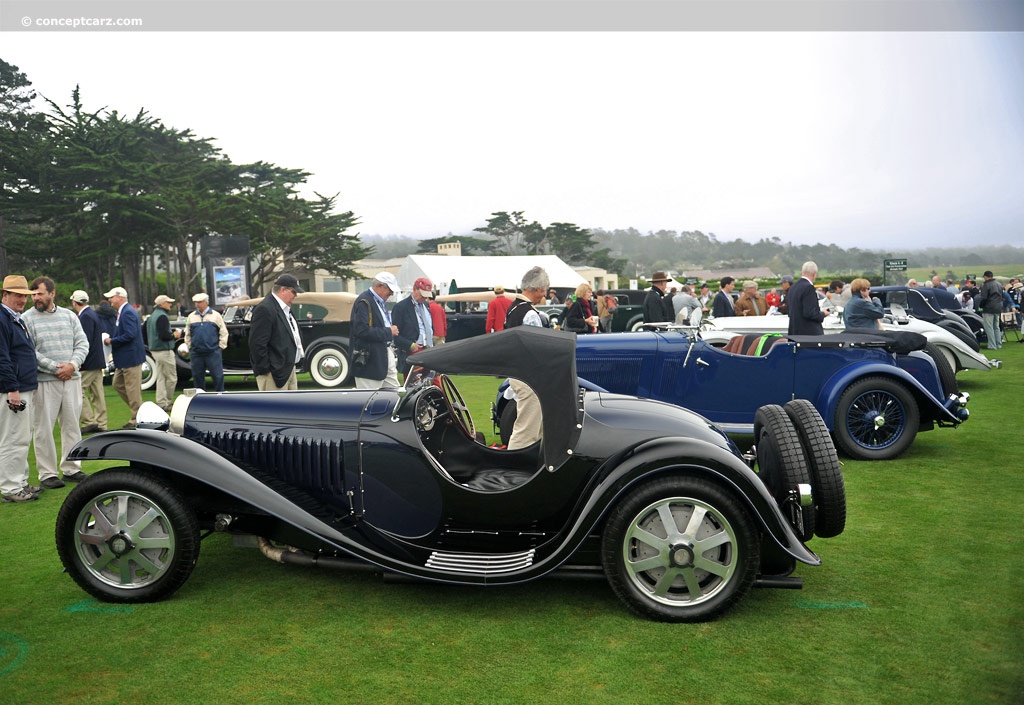
Roadster
View info and history
by Daniel Vaughan | Apr 2020
Related Reading : Bugatti Type 55 History
Bugatti had a distinguished history when it came time to produce the Type 55. Their resume included extremely successful race cars and elegant and sophisticated road-going vehicles. In the racing department, the minimalist Type 35 was a very competitive car that racked up many impressive victories. It was, like so many other Bugattis, available with either a naturally aspirated engine or with the....
Continue Reading >>
Continue Reading >>
Related Reading : Bugatti Type 55 History
Despite what every adolescent boy in America may tell you, the awe-inspiring Veyron was not Bugattis first car. Nor was it Bugattis first tribute to speed, excess, and unbridled wealth. The 16-cylinder, quad-turbo Veyron was conceived under Bugattis current Volkswagen ownership. Before the German takeover, the Italians had some fun with Bugatti as well. For a few years during the early 1990s,....
Continue Reading >>
Continue Reading >>
1932 Bugatti Type 55 Vehicle Profiles
Recent Vehicle Additions
Performance and Specification Comparison
Type 55 Specification Comparison by Year
Year
Production
Wheelbase
Engine
Prices
8 cyl., 138.04 CID.
Related Automotive News

Bugatti Vanvooren Leads The Grandes Marques At Bonhams
The Bonhams Grandes Marques du Monde à Paris Sale is renowned for celebrating the truly great automotive marques and coachbuilders across all eras and this years edition is no exception, with a 1932 Bugatti Type 55 Vanvooren one of the highlights...

Radnor Hunt Concours 2017
The Philadelphia Vintage Grand Prix was failing. The parks department and city put up enough bureaucratic roadblocks to make survival difficult. An event organizer and Radnor Hunt member Mike Tillson redirected his energies. He recalls approaching...

Celebrating the pioneering Bugatti Type 50S and its incomparable racing heritage
In 1937, Bugatti won the 24 Hours of Le Mans for the very first time with the Type 57G Tank. But six years earlier, the brand made its official factory debut at the legendary race with a car that would give both Ettore and Jean Bugatti a taste of the...

Bugatti: Automotive artistry to admire
From the day it was formed in 1909, Bugatti has embodied exquisite design, with founder Ettore Bugatti hailing from a family of acclaimed artists.
To this day, the brands commitment to excellence extends beyond power output and speed. Because...

Pebble Beach Concours D'Elegance 2023: A celebration of Bugatti's incomparable legacy
The incomparable craftsmanship and coachbuilding expertise of Bugatti have always played a leading role at the Pebble Beach Concours dElegance in California, one of the most renowned collector car events in the world, ever since a 1938 Type 57 coupé...

Bugatti Legends Type 41 LA Royale – A Royal Vehicle
In the 1920s, Bugatti created the most luxurious car in the world
Molsheim, 09 04 2020 With the Type 41 Royale, in 1926, Bugatti presented the strongest, largest and most luxurious automobile in the world, characterized by unimaginable...

Gooding & Company Proudly Presents 'Passion of a Lifetime' – A Masterpiece Collection of Sixteen Substantial Automobiles for Sale on 1 April 2020
Santa Monica, Calif. (22 January 2020) – Gooding %26 Company, the internationally recognized auction house, is honored to reveal the automobiles comprising the companys first-ever London sale, Passion of a Lifetime, at Somerset House in central...































